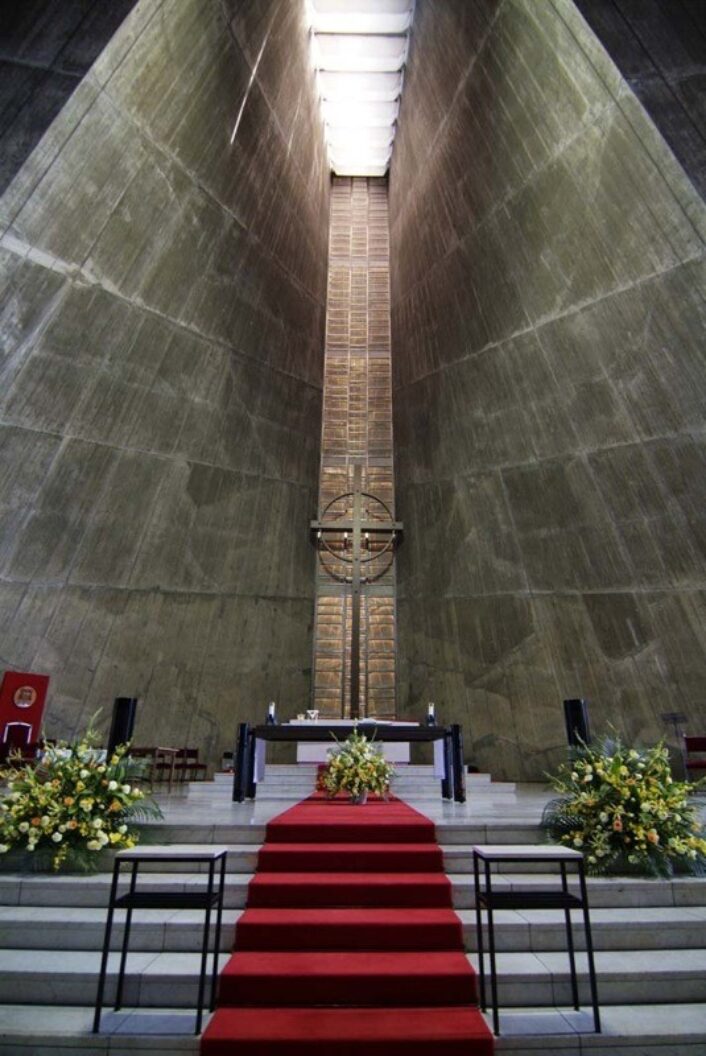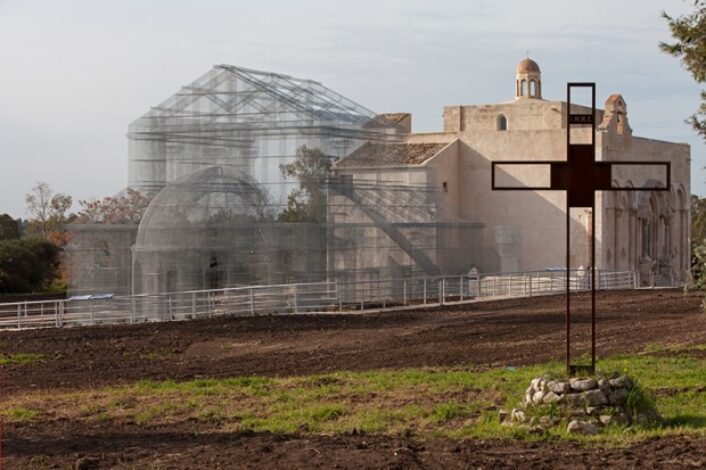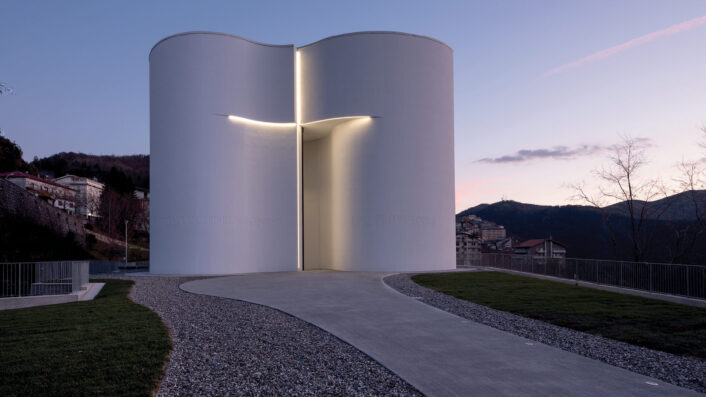Architecture
A new church rises from the ashes at Ground Zero
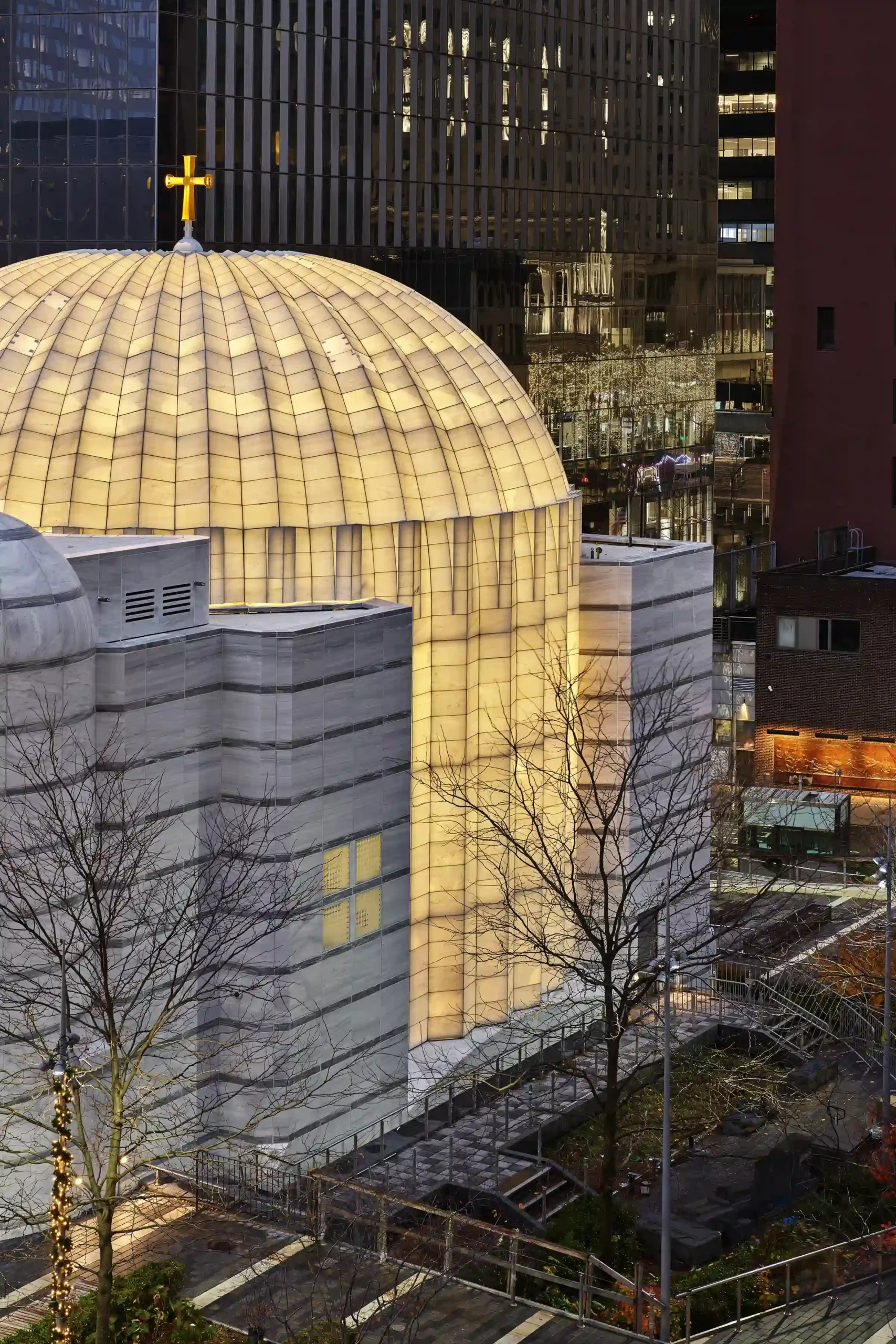
The church opened last July 4th.
Image courtesy of: Architectural Record, photographed by: Alan Karchmer
Prior to 9/11, the little St. Nicholas Greek Orthodox Church stood out as an oasis for those who needed solace and quiet amid the hustle and bustle of lower Manhattan. In 1916, the church was founded in a small row-house that used to be a tavern. Over the years as real estate changed and the row-houses gave way to high-rise buildings, developers tried to acquire the property. However the church remained and became a familiar and comforting place to those working in the area.
Sadly though, the church was another casualty of the horrific attacks that took place on September 11, 2001. Following years of fundraising and bureaucracy, the Spanish architect Santiago Calatrava was awarded the emotional and monumental task of designing a new St. Nicolas. The architect referred to the church as a “human-scaled presence in an ensemble of giants.”
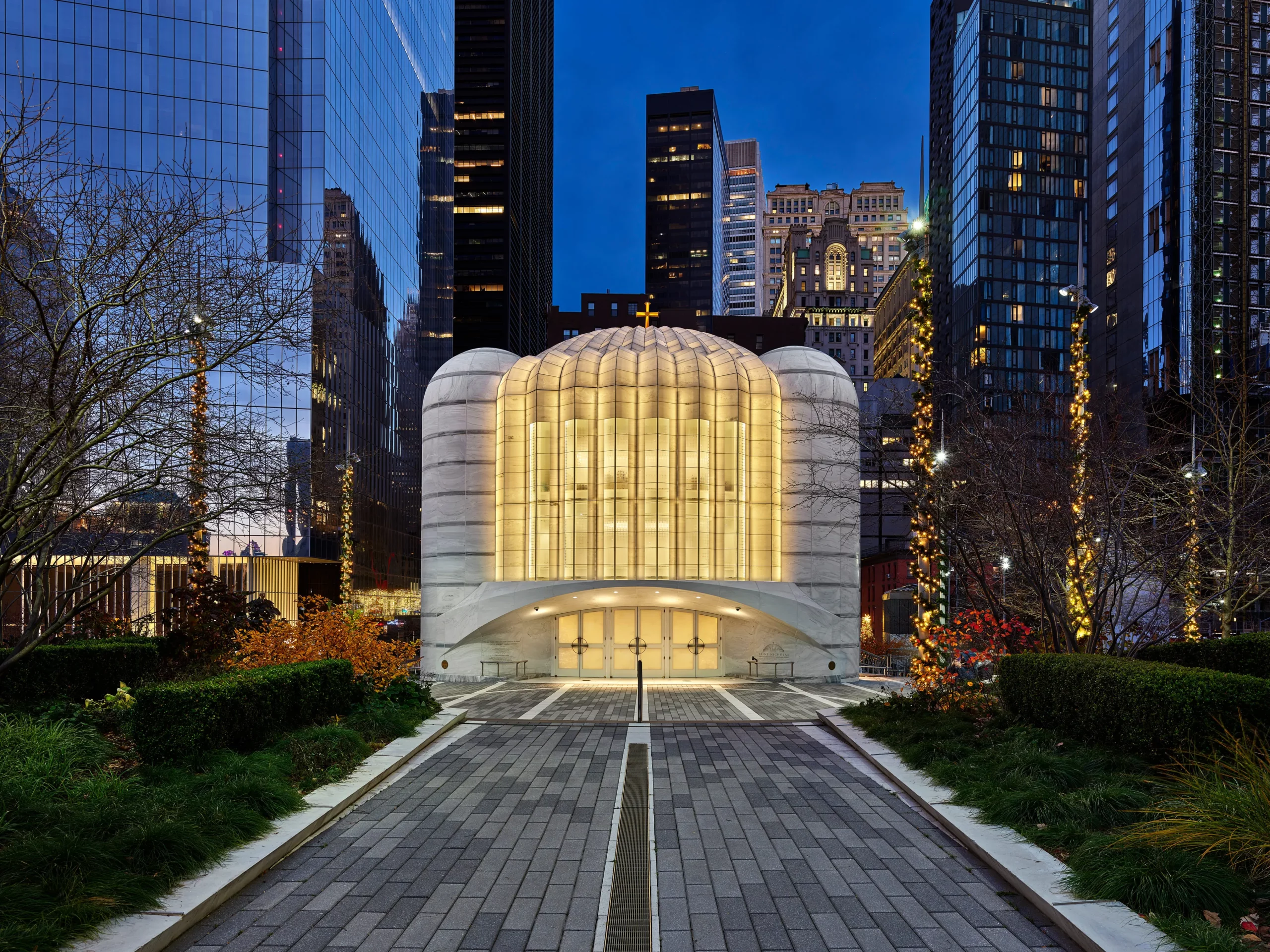
Calatrava designed the church to be a “sanctuary for worship;” yet also a vivid reminder of horror of the 2001 terrorist attacks.
Image courtesy of: Curbed
The new, compact domed church was designed by Calatrava (courtesy of Dezeen) “to be a ‘sanctuary for worship’ but also a reminder of the impact of the terrorist attacks.” It is almost impossible to believe that the church was actually designed, as among other reasons, it took years to find an exact location. With the original lot eliminated, the site rests on the roof of the World Trade Center Vehicle Security Center. Essentially, the church was built atop an underground parking garage.
The church is elevated 25 feet off the ground onto an elevated section of Liberty Park. The entrance, which faces the large, open memorial plaza, was designed between two towers and leads directly into the liturgical spaces. Interestingly, the religious edifice is very near to Calatrava’s $4 billion transportation hub, Oculus… a project that almost upended the architect’s American career because of major cost overruns and delays.
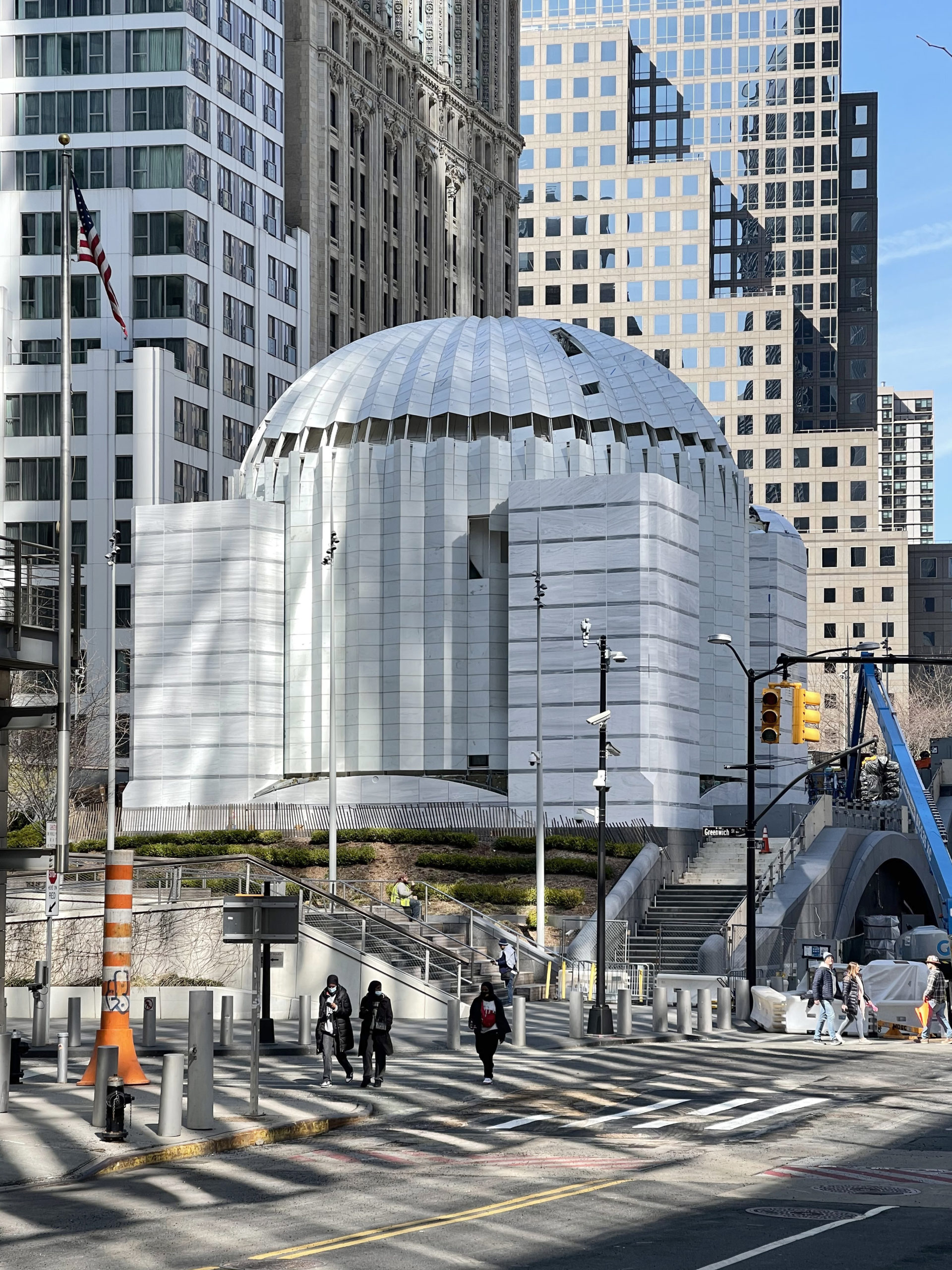
Calatrava was instructed that his design should (courtesy of The Wall Street Journal) “respect the traditions and liturgy of the Greek Orthodox Church, but at the same time reflect the fact that we are living in the 21st century.”
Image courtesy of: New York Yimby, photographed by: Michael Young
Calatrava designed the church to be a smaller version of Istanbul’s Hagia Sophia, a former Greek Orthodox cathedral that became a mosque 600 years ago. The simple shape is a hemispheric dome flanked by four square towers which gives it the impression of being a square.
The dome’s walls are made out of thin sheets of Pentelic marble… this was done for two reasons. Using this material enabled the building to be illuminated at night and the material is the same Greek marble used for the Parthenon. Cutting the marble so thin allows for the material to be transparent; so when the sun sets, the church turns “into a glowing lantern.” The marble was backlit by LEDs that glow at night to create a “beacon of hope and faith in lower Manhattan.”
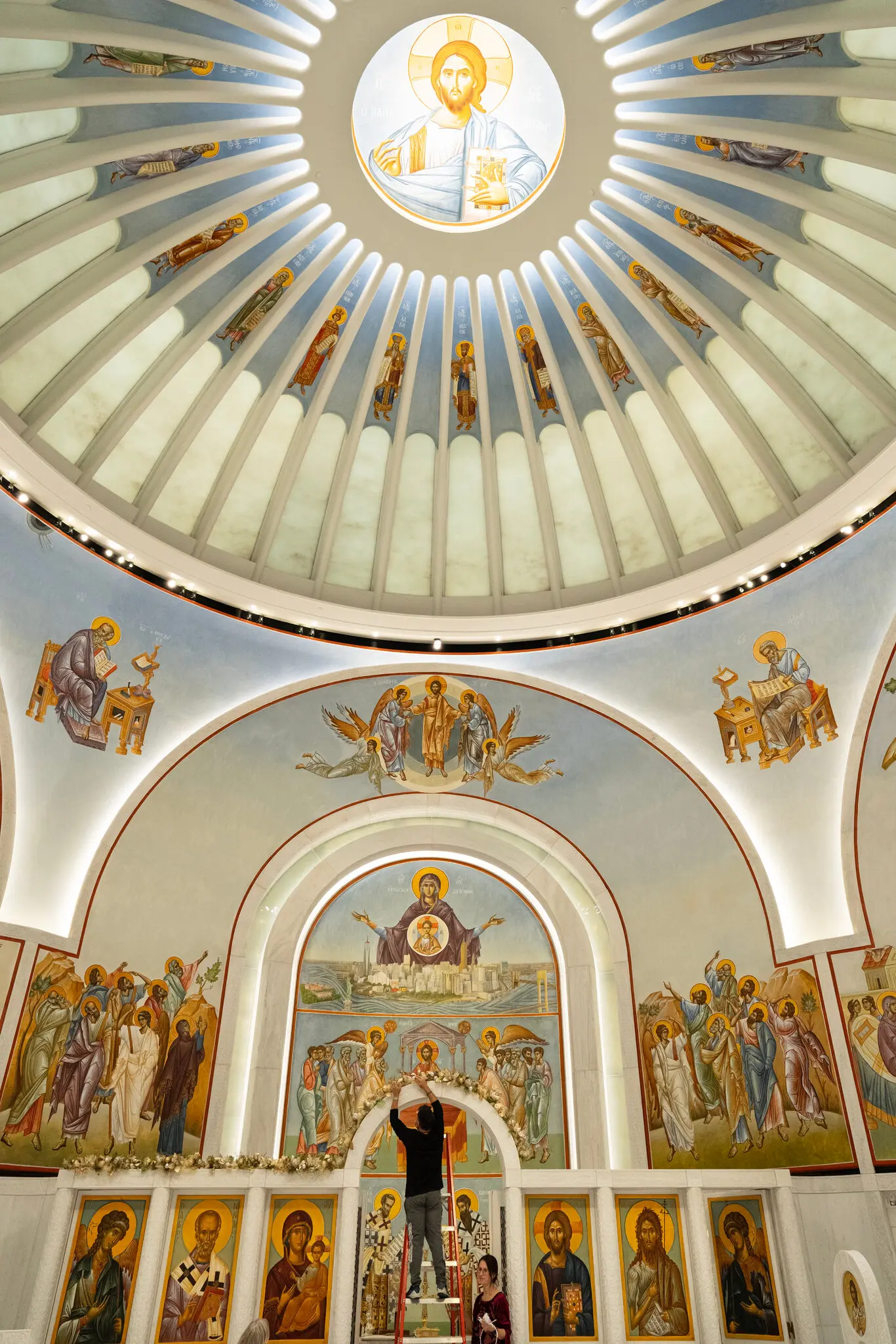
Just prior to the official opening, parishioners decorated the church with wreaths, garland, and trees.
Image courtesy of: The New York Times, photographed by: James Estrin
Everything designed was done in accordance to Orthodox tradition. Inside, the gorgeous frescos were painted by Father Loukas of Xenophontos, a Greek monk from Mount Athos. The frescos depict scenes from Christ’s life “around the periphery, 20 saints on the ribs of the dome, and at its apex the customary image of Christ Pantocrator, austere and remote.” The monk also reflected specifically upon 9/11 in his portrayals. In one scene, “Jesus greets first responders and firefighters who die. In another, boats on the river rescue people fleeing the burning tower.” Perhaps the most poignant artwork shows Mary watching over sweeping views of Manhattan as One World Trade Center rises on the left.
Father Loukas told CBS News’ Scott Kelley (courtesy of Smithsonian Magazine), “I personally want this church, through the iconography, to open up a new horizon for people, that they come away with hope. If this happens, the icons will have fulfilled their purpose.”
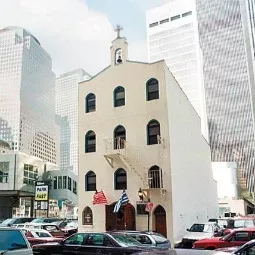
The original St. Nicholas Greek Orthodox Church.
Image courtesy of: National Catholic Register
Just prior to 9/11, the church only had 60 families in its flock; however today, there is renewed energy in Lower Manhattan. The area is no longer simply a place to come for work, many residential buildings have brought renewed and constant energy to the area. The church confirmed that St. Nicolas is being booked for many upcoming weddings and baptisms.
What is great is that some of the pervious important and personal traditions are repeating themselves as parishioners search for ways to be close to the past. At the old church, parishoners would to help clean the church on feast days. Since the new church is not as intimate of a space, it was necessary to employ a professional cleaning service. However, parishioners are now showing up to help in whatever way they can. Courtesy of The New York Times, Ms. Pavlakos, who spent some time removing the melted-down candles said, “My dad, when he was alive, used to do that. He was in charge of the candles and the finances.” Mr. Zaharatos’ ties to St. Nicolas are just as strong; he said, “The church connects me to my parents in a powerful way. It doesn’t look anything like it was, but I feel them here with me.”
